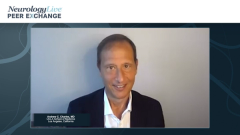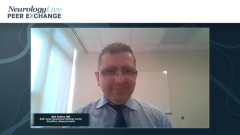
AHS and NHF Consensus Statements for Migraine
Drs Bradley Torphy and Jessica Ailani share thoughts on using consensus statements to guide the treatment of migraine.
Episodes in this series

Jessica Ailani, MD:Brad, maybe you can talk to us about some recent consensus statements. We have both a consensus statement from the American Headache Society and the National Headache Foundation, both which are helpful to both healthcare providers and also there's patient aspect to both of these statements. Do you find that these kinds of consensus statements are a bit helpful when providers are looking at, how do they decide when to use new treatment options, as opposed to using things that have been around for a long time? Especially when starting a patient who's new to treatments, who've never been on anything. Do you want to talk to us about that?
Bradley Torphy, MD: Yes. The consensus statements are helpful for a couple of reasons. Certainly, if I'm describing to patients why we're choosing to use a newer and arguably more expensive option. But where it's even more helpful is it gives me confidence if I happen to be in a peer-to-peer meeting with an insurance physician reviewing the case, the American Headache Society says if the patients have tried and failed 2 of these older treatments, it's recommended that we give them a try of these newer options. The thing about it is also, by the time patients come to us, if they've been referred to us by the primary care provider, or if they found us on their own or referred from a neurologist, something has probably happened that has led them to seek care. They've probably been living with this for quite some time, as we know, but they missed a graduation, they missed some important event, or the patient's husband has said, honey, we need to get this taken care of or our relationship is going to suffer. She wants us to help her as soon as possible. And again, having these consensus statements can give us confidence to fight the fight with insurance companies.
Jessica Ailani, MD: This is particularly important. And I've been using these statements quite a lot recently. When you see some ridiculous denial that's like, oh, you need to reference a guidance statement or some consensus statement before we'll approve it. I recently had this occur when an insurance company denied combination treatment for onabotulinumtoxin and a CGRP [calcitonin gene-related peptidemonoclonal] antibody, while it's lo and behold in a consensus statement stating that they're probably effective when you combine. I was able to add that into a simple sentence, a simple letter of medical necessity to say, here you go, here is a consensus statement that supports my use of combination therapy. And, we're waiting to hear, but this was a major insurance plan in our region. And if we're able to overturn something simple like that, the impact is thousands of patients that would be able to benefit from that. And simply, when an insurance company decides a patient must try 6 generic oral alternatives instead of 2, and you can pull out consensus statements or even with the National Headache Foundation, their suggestions are different than American Headache Society. A patient-centric that if a patient feels that they need to go to different options sooner, and I want to pull on that one because a patient feels they want to go to a newer option quickly. Now I have an option as a provider as to which statement might suit the patient's needs in a better way and pull that for a letter of medical necessities. They're very complementary to each other. But there are certain differences between the 2 and I can then use them for that fightback that is needed for the patient. Now, it is not easy that every practice is going to have the time for this. I don't necessarily. I am not able to fight every single decision, but I can give this guidance to the patients as well. This is nice for us to have this, but also, helps us make decisions and to allow our colleagues to say, well, I have these documents. It gives us a little graph outline that say, try these first. And then if that doesn't work, go to these newer treatment options. Which if someone is not doing this every day - and Julio, you mentioned understandably if I was primary care and I had to treat thousands of diseases and headache is not the first thing I'm thinking, it is nice to pull up a statement that says, this is what you should do to consider your patient with migraine. Use this first, use this second; if that doesn't work, use this third. It's more of algorithm-based idea, but still trying to individualize by saying if the patient's nauseous think about non-oral, think about having a backup for a patient who doesn't - that first-line treatment didn't work, have that backup option and giving you the freedom to make more specific options for the patient. That's really nice.
Transcript Edited for Clarity
Newsletter
Keep your finger on the pulse of neurology—subscribe to NeurologyLive for expert interviews, new data, and breakthrough treatment updates.































